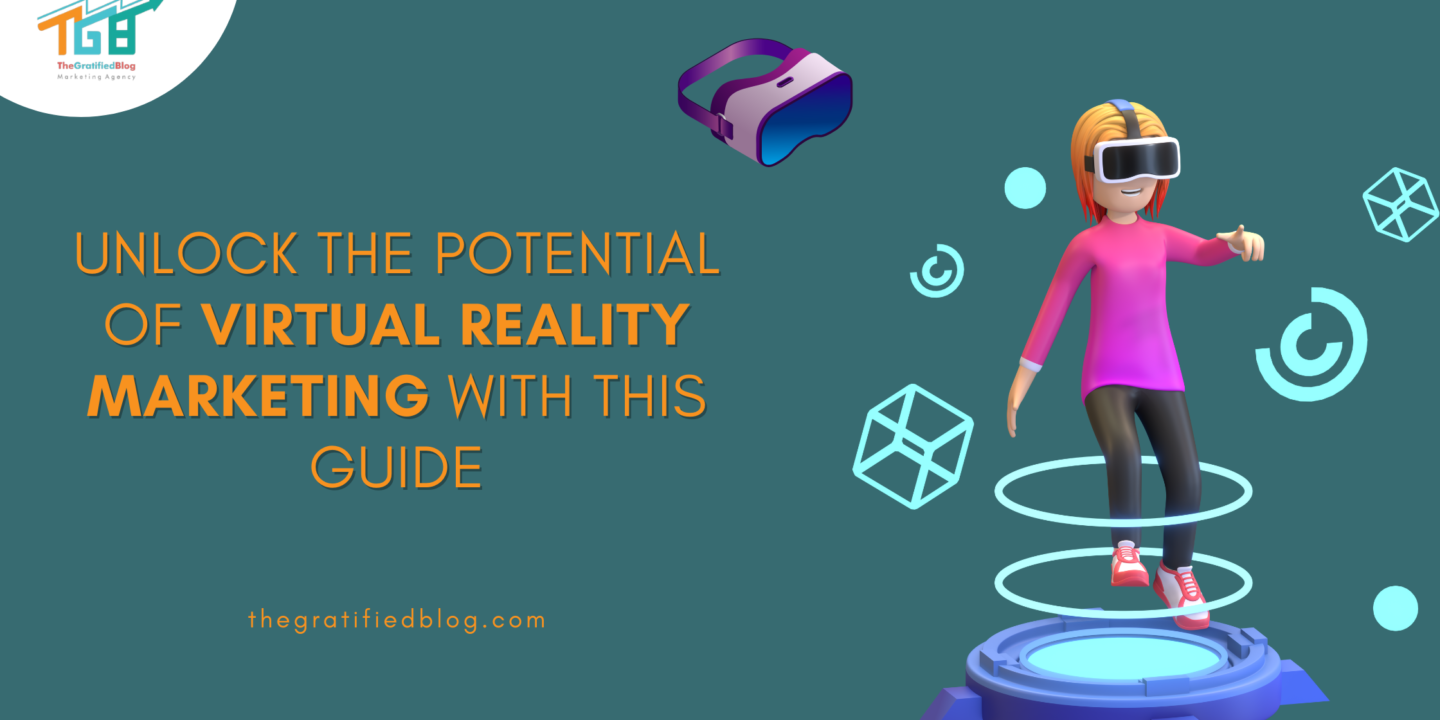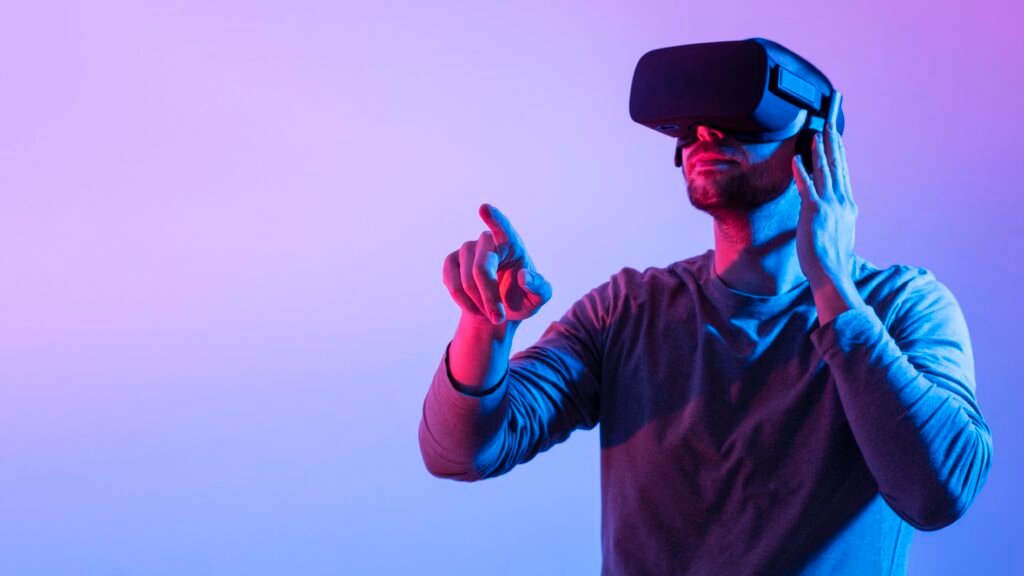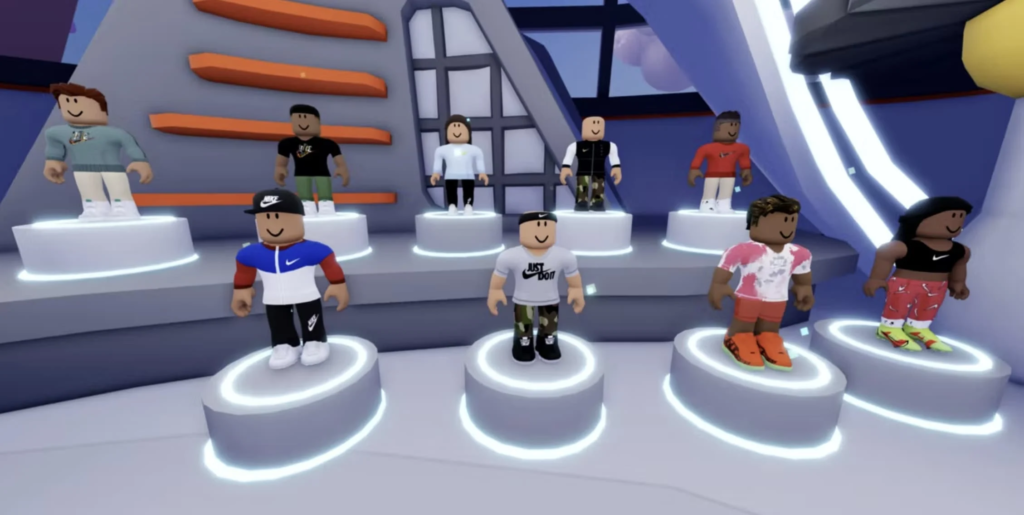
In the constantly changing digital landscape, the fusion of technology and marketing strategies has paved the way for groundbreaking innovations. One such innovation that continues to reshape the marketing sphere is Virtual Reality Marketing. This transformative technology has transcended traditional boundaries, offering Brands exceptional chances to interact with their audiences in ways previously thought impossible.
This detailed guide explores the complexities of virtual reality marketing, including its evolution, advantages, challenges, and examples. Whether you’re a seasoned marketer looking to leverage VR’s potential or a curious enthusiast eager to understand its impact, this blog will act as your compass for navigating the constantly evolving terrain of VR Marketing.
Before we delve into the limitless possibilities of Virtual Reality in marketing, let’s first explore the concept of virtual reality.
What Is Virtual Reality?

Virtual reality (VR) refers to a computer-generated simulation of an interactive three-dimensional environment that users can explore and often interact with in a seemingly natural or physical way.
VR technology typically involves wearing a VR headset or using other specialised equipment that immerses the user in a digital world, complete with visual, auditory, and sometimes tactile feedback.
What Is Virtual Reality Marketing?
Virtual reality marketing, on the other hand, uses VR technology to create immersive and engaging marketing experiences. It involves using VR to showcase products or services, build brand storytelling experiences, offer virtual tours or demos, and provide interactive content that enhances customer engagement.
VR marketing aims to captivate audiences by transporting them into virtual environments where they can experience brands in a more personalised and memorable way.
Having understood the concepts of virtual reality and virtual reality marketing, let’s now delve into the advantages and obstacles associated with it.
Benefits Of VR Marketing

- Enhanced Customer Engagement: VR Marketing engages customers by offering immersive experiences beyond traditional marketing methods. By placing consumers directly into virtual environments related to products or services, VR creates a sense of presence and involvement that leads to deeper engagement. Users actively interact with content, making decisions and experiencing scenarios, which can significantly increase brand recall and emotional connection. This heightened engagement fosters a stronger relationship between brands and consumers, driving loyalty and advocacy.
- Immersive Brand Experiences: One of VR marketing’s key benefits is its ability to deliver immersive brand experiences that make a lasting impression on consumers. Through VR, brands can showcase their offerings dynamically and interactively, allowing users to explore products, environments, or narratives in a virtual space. This immersive nature captures attention and creates memorable experiences with users beyond VR interaction. Such experiences elevate brand perception, differentiation, and affinity among target audiences.
- Data Analytics and Personalization: VR Marketing provides valuable insights into consumer behaviour and preferences via data analytics. Marketers can gather data on engagement levels, user paths, interactions with specific elements, and more by tracking user interactions within virtual environments. This data fuels personalised marketing strategies, allowing brands to tailor content, offers, and experiences based on individual preferences and behaviours. The result is more targeted and effective campaigns that resonate with consumers personally, driving higher conversion rates and ROI.
- Cost-Effective Campaigns: Contrary to common perception, VR Marketing can offer cost-effectiveness when contrasted with conventional methods such as physical events or elaborate product demos. While initial investments in VR technology may seem substantial, the ability to reach a global audience without geographical constraints can significantly reduce overall campaign costs. VR also offers scalability, allowing brands to reuse virtual assets across multiple campaigns and channels, thus maximising ROI over time. Additionally, VR can lower costs associated with physical prototypes, travel expenses, and venue rentals, making it a compelling option for brands seeking innovative yet cost-efficient marketing solutions.
Challenges Of VR marketing

- Technical Complexity: Due to the complex nature of VR technology, implementing VR marketing campaigns requires technical expertise and resources. Creating high-quality VR content, ensuring compatibility across various devices, and optimising performance can be challenging. It’s important to note that these technical requirements may come with significant costs, such as [insert specific costs associated with VR marketing]. Brands must be prepared to invest in skilled professionals and robust infrastructure to overcome technical hurdles and deliver seamless VR experiences to users.
- Accessibility and Adoption: Despite advancements, VR hardware and devices can still be expensive, limiting accessibility for some target audience segments. Additionally, not all consumers are familiar with or comfortable using VR technology, leading to slower adoption rates. Marketers must address these accessibility barriers by considering alternative distribution channels, educating consumers about VR benefits, and offering accessible VR experiences to a broader audience.
- Ethical and Privacy Concerns: VR Marketing raises ethical considerations regarding user privacy, data security, and the potential for immersive experiences to influence behaviour. Collecting and utilising personal data within VR environments requires strict adherence to privacy regulations and transparent communication with users. It’s crucial to note that these ethical and privacy concerns are not to be taken lightly, since they can have a substantial influence on the success and reputation of VR marketing initiatives. Marketers must prioritise ethical practices, deploy strong data protection measures and secure explicit consent from users to build trust and mitigate privacy concerns in VR Marketing initiatives.
Now, let’s explore how virtual reality can be utilised in marketing strategies.
How Can We Use Virtual Reality In Marketing?

Immersive Product Demonstrations
VR enables brands to display their products in a highly immersive and interactive way. Instead of traditional static images or videos, customers can virtually experience products in a simulated environment.
For example, automotive companies can offer virtual test drives, allowing customers to explore car features, interior design, and performance without visiting a dealership. This approach enhances engagement, increases product understanding, and influences purchase decisions by providing a realistic and engaging experience.
Virtual Brand Experiences
Brands can create virtual environments that reflect their identity, values, and storytelling. This could involve virtual brand tours, where customers can explore the brand’s history, mission, and milestones in a visually compelling way.
For instance, a fashion brand could transport users to a virtual runway show or behind-the-scenes studio tour, offering an exclusive and immersive brand experience. Such immersive encounters deepen brand connections, foster emotional engagement and create a lasting impact on customers.
Virtual Events And Experiences
With the rise of remote interactions, VR enables brands to host virtual events, conferences, and product launches that mimic physical experiences. Attendees can join from anywhere globally, interact with speakers, network with other participants, and engage in activities through their VR headsets.
This expands reach and accessibility and delivers a more engaging and memorable event experience. Virtual events powered by VR technology enhance brand visibility, drive audience engagement, and enable real-time interactions in a virtual setting.
Virtual Retail And E-commerce
VR transforms the retail and e-commerce landscape by offering virtual shopping experiences. Customers can browse virtual stores, try on products virtually, and make purchase decisions within immersive digital environments.
For example, furniture retailers can provide virtual room planners where customers can visualise how furniture pieces will look in their homes before buying. VR-driven e-commerce experiences enhance convenience, reduce return rates, and improve customer satisfaction by bridging the gap between online shopping and in-store experiences, creating a seamless and personalised shopping journey.
Examples Of Virtual Reality Marketing
Gucci Town
Gucci, a leading luxury fashion brand, recently introduced “Gucci Town” within the Roblox metaverse. This virtual experience allows users to explore the brand’s heritage and engage with fellow players.
The interactive features of Gucci Town include mini-games, art exhibitions to browse, and a virtual Gucci store where players can buy clothing for their Roblox avatars. Wearing these virtual garments allows users to stand out and ignites conversations among curious onlookers, encouraging them to visit and explore the diverse attractions within Gucci Town.
IKEA
In 2019, IKEA, the renowned Swedish furniture company, unveiled IKEA Place. This innovative app revolutionises furniture shopping by allowing users to visualise how pieces will appear in their homes before making a purchase.
This advanced technology enables users to virtually furnish entire rooms with IKEA’s furniture collection, providing a seamless and immersive shopping experience without needing to visit a store physically.
Nikeland
Nike recently debuted in the metaverse through a collaboration with Roblox. This resulted in the creation of Nike, a virtual realm inspired by Nike’s actual headquarters in Beaverton, Oregon.

Nikeland boasts structures mirroring Nike buildings, expansive fields, and interactive zones for players to engage in various minigames. Leveraging real-world movements via mobile device accelerometers, players can translate physical actions like jumps and sprints into gameplay within Nikeland.
Additionally, Nikeland features a digital showroom where players can purchase Nike’s latest virtual products, including iconic offerings like the Air Force 1, Nike Blazer, Air Force 1 Fontanka, and Air Max 2021, enhancing the immersive experience for users.
Conclusion
Given your understanding of virtual reality marketing, why not incorporate these techniques into your marketing strategy? Implementing VR today can yield valuable insights and drive impactful results for your brand. Experience the potential firsthand and witness the positive impact on customer engagement, brand perception, and overall marketing effectiveness.
However, if you still have any questions related to the blog, please leave them in the comments section below. We will be happy to answer you.
Thanks for reading 🙂








No Comments